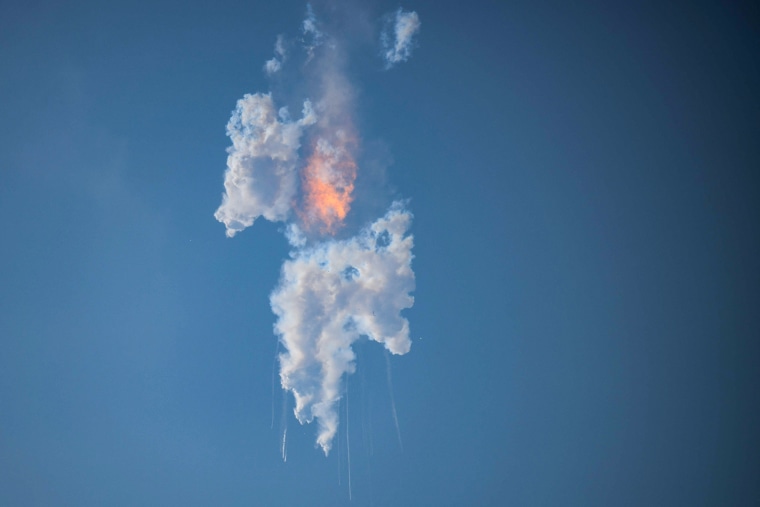Five environmental and cultural heritage groups are suing the Federal Aviation Administration, alleging that the agency violated the National Environment Policy Act when it allowed SpaceX to launch the largest rocket ever built from its Boca Chica, Texas facility without a comprehensive environmental review, according to court filings obtained by CNBC.
SpaceX’s Starship Super Heavy test flight on April 20 blew up the company’s launch pad, hurling chunks of concrete and metal sheets thousands of feet away into sensitive habitat, spreading particulate matter including pulverized concrete for miles, and sparking a 3.5-acre fire on state park lands near the launch site.
The lawsuit against the FAA was filed in a district court in Washington D.C. on Monday by plaintiffs including: The Center for Biological Diversity, the American Bird Conservancy, SurfRider Foundation, Save Rio Grande Valley (Save RGV) and a cultural heritage organization, the Carrizo-Comecrudo Nation of Texas.
The groups argue that the FAA should have conducted an in-depth environmental report, known as an environmental impact statement (EIS), before ever allowing SpaceX to move ahead with its Starship Super Heavy plans in Boca Chica.
They wrote, “The FAA failed to take the requisite hard look at the proposed project and has concluded that significant adverse effects will not occur due to purported mitigation measures.”
The plaintiffs argue that the agency waived the need for more thorough analysis based on proposed “environmental mitigations.” But the mitigations the FAA actually required of SpaceX were woefully insufficient to offset environmental damages from launch events, construction and increased traffic in the area, as well as “anomalies” like the destruction of the launch pad and mid-air explosion in April.
In their complaint, the attorneys note that the FAA’s own Chief of Staff for the Office of Commercial Space Transportation in June 2020 said the agency was planning an EIS. Later, “based on SpaceX’s preference,” the lawyers wrote, the federal agency settled on using “a considerably less thorough analysis,” which enabled SpaceX to launch sooner.
Despite the particulate matter, heavier debris and fire, SpaceX CEO Elon Musk said over the weekend on Twitter Spaces, “To the best of our knowledge there has not been any meaningful damage to the environment that we’re aware of.”
The exact impacts of the launch on the people, habitat and wildlife are still being evaluated by federal and state agencies, and other environmental researchers, alongside and independently from SpaceX.
National Wildlife Refuge lands and beaches of Boca Chica, which are near the SpaceX Starbase facility, provide essential habitat for endangered species including the piping plover, the red knot, jaguarundi, northern aplomado falcon, and sea turtles including the Kemp’s Ridley. Kemp’s Ridley is the most endangered sea turtle in the world, and the National Wildlife Refuge contains designated critical habitat for the piping plover.
Boca Chica land and wildlife there, namely ocelots, are also sacred to the Carrizo-Comecrudo tribe of Texas.
As of last Wednesday, researchers from the U.S. Fish and Wildlife Service had not found any carcasses of animals protected by the Endangered Species Act on the land that they own or manage in the area. However, the researchers were not able to access the site for two days after the launch, leaving open the possibility that carcasses could have been eaten by predators, washed away or even removed from the site.
Access to the state parks, beaches and the National Wildlife Refuge area near Starbase, by tribes, researchers and the public, are of particular concern to the groups challenging the FAA.
The plaintiff’s attorneys noted that in 2021, Boca Chica Beach was closed or inaccessible for approximately 500 hours or more, based on the notices of closure provided by Cameron County, with a “beach or access point closure occurring on over 100 separate days.” That high rate of closure, which the FAA allowed, “infringes upon the ability of the Carrizo/Comecrudo Nation of Texas to access lands and waters that are part of their ancestral heritage,” the groups argued.
A spokesperson for the federal agency said, “The FAA does not comment on ongoing litigation matters.”
